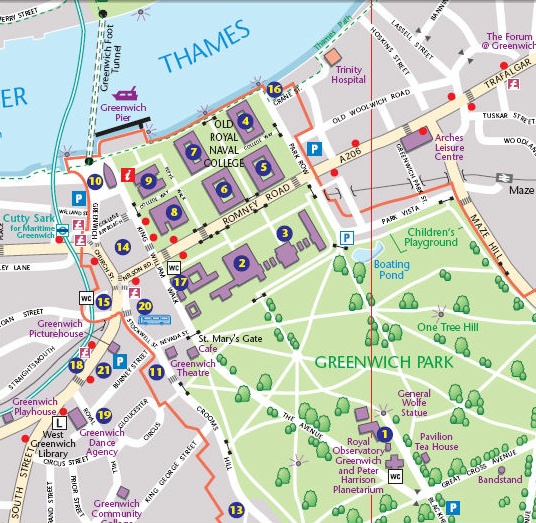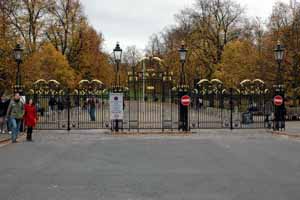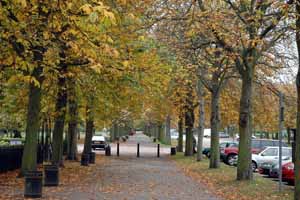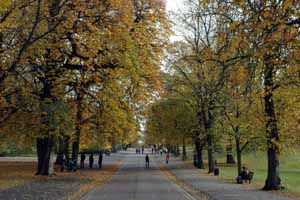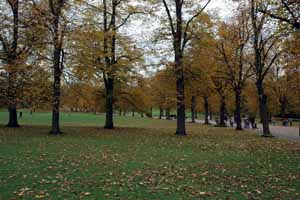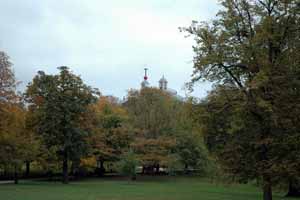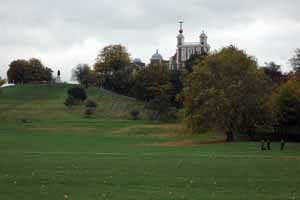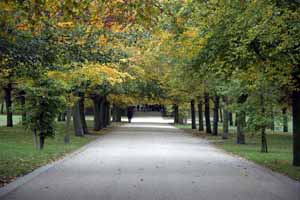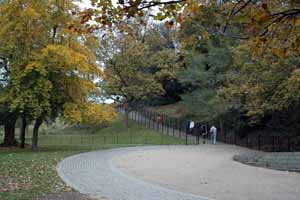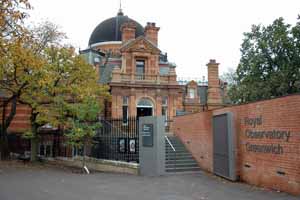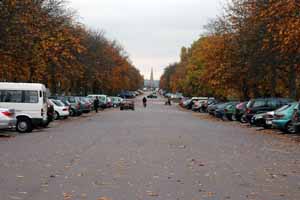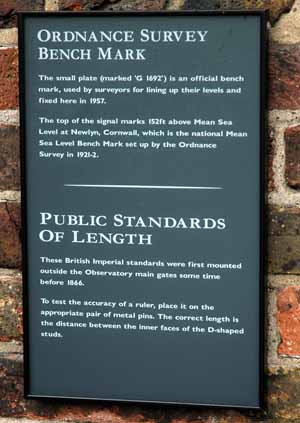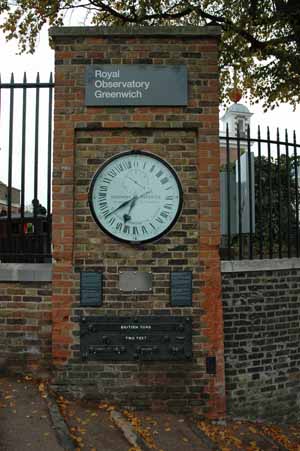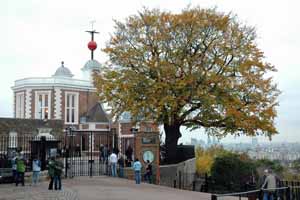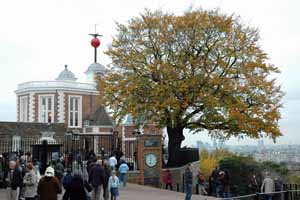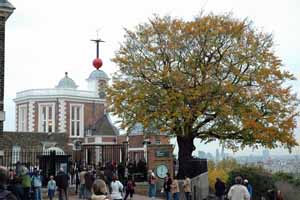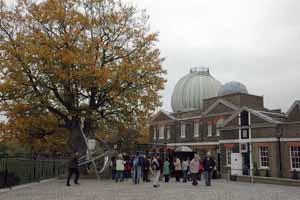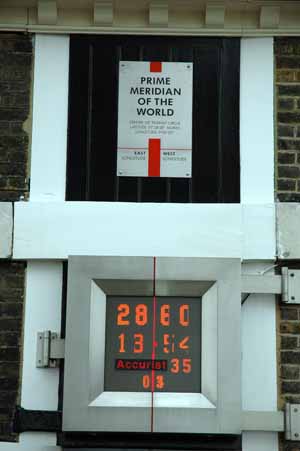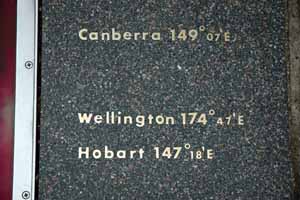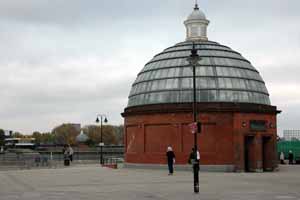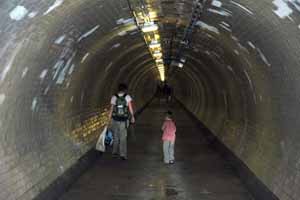Greenwich, Universal Time and the Prime MeridianHaving read the books about Harrison's Clocks and the search for the determination of longitude, a visit to Greenwich was required. There are at least four means of getting to Greenwich from central London - train, bus, water ferry or walking. As there is an established walkway along each bank of the Thames, and as I had the best part of a full day, I decided to walk along the true left bank. This part of the story is told on another page (Paul's Walk). So I arrived at Greenwich via the Docklands Light Rail and headed for the Observatory on the Hill. I had decided that I should reach the Observatory before 1300 hours to be in time to see the time ball rise at 1255 and fall at 1300. This I managed to do. The approach to the Observatory can be either through the Maritime Museum (number 2 on the map below), or the grand St Mary's Gate, then either up the road or through the trees. I chose the path through the trees. There are several good maps of the Park that can be downloaded. Part of the map I used is shown below - the full map can be downloaded here
Being mid-November, the trees were in their best Autumn colours so there are lots of photos. The deer in the park were too shy to photograph, and the black crows or ravens would not keep still long enough for a portrait (especially as I did not have any food to bribe them with...):
The view from the top, beside the Observatory and the statue of General Wolfe is quite amazing, and fully justifies why the Observatory was built on this hill. Here you find the original Observatory, Flamsteed's House, the new Observatory and a little further down Blackheath Ave, the Pavillion Tea House where I had a bowl of soup for lunch. The old Observatory and Flamsteed's House is now a museum, with the original telescopes and other apparatus, including the cases for the three huge pendulum clocks. An in the lower room are the most amazing exhibits of all - Harrison's Clocks - H1, H2 and H3, now all restored and highly polished.
And finally, the real reason why Greenwich was established in the first place - to determine solar time as accurately as possible, to define a prime longitude and to time to the captains of ships as they passed down the Thames and off on voyages around the world. The Time Ball was set up as a signal to the ships - the ball usually resting at the base of the mast, but as 1250 it is hauled half way up, at 1255 it creeps to the top, and at 1300 it drops, allowing captains to set their own timepieces. I sat on a broad seat at the base of the General Wolfe Statue to take the photos of the time ball as it climbed the mast, paused at the top, then plummeted down again. Quite a few people watched me with puzzled expression as I kept taking photos of the scene - I don't think they knew the significance of the moment.....
With the sun dying (well I guess it was, the sky was heavily overcast by this time) and the cool breeze growing, I headed back to the Thames for the ferry back to Westminster pier. The next boat was about 30 minutes away, so I decided to walk under the Thames to the other side for the view. There is a pedestrian tunnel under the Thames, which I was intending to use if my walk had not been terminated at Shadwell....
The view of the Thames taken from the ferry, can be seen with the Thames Walk collection... Last updated: 30/06/2015 |
